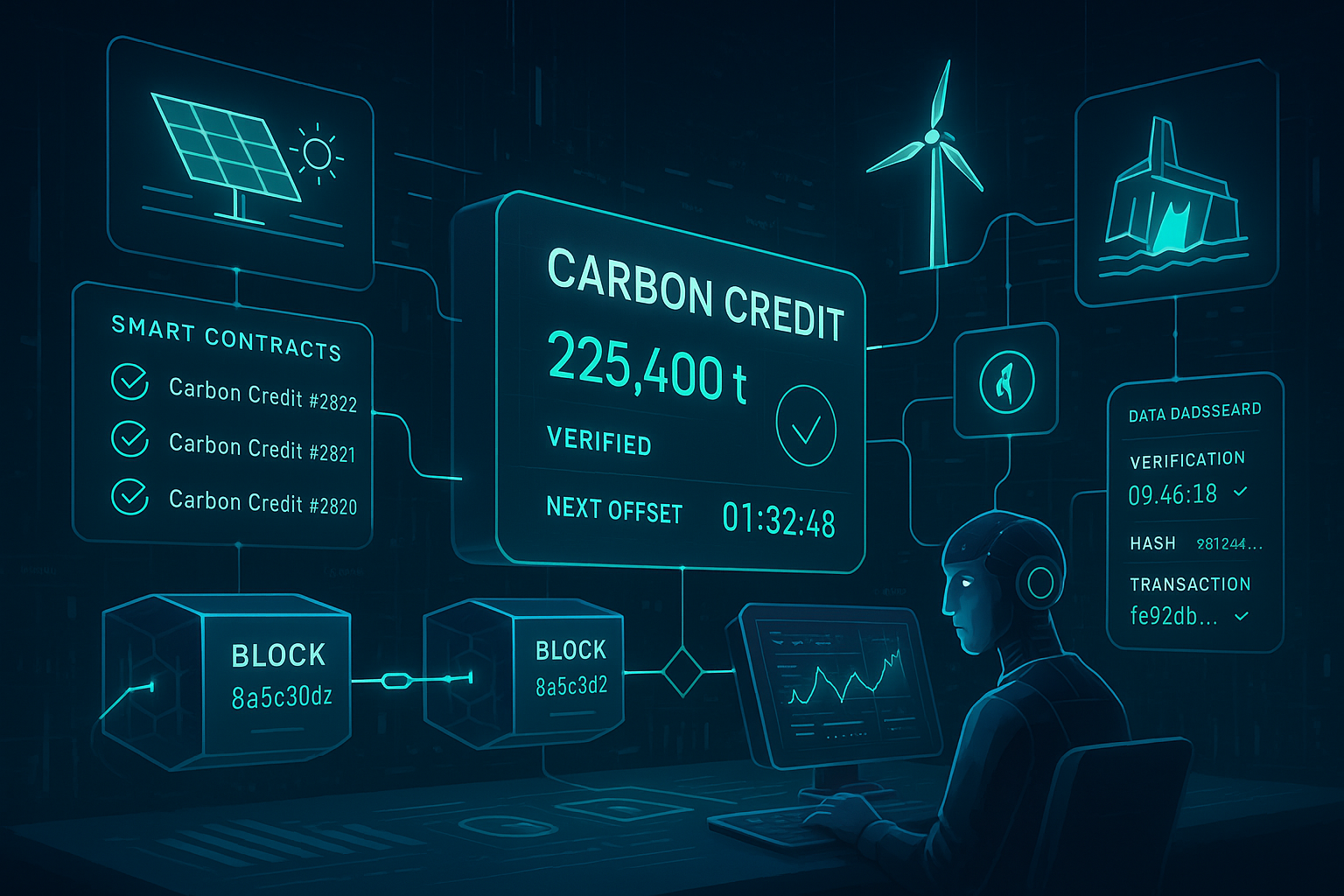Climate change stands as one of the world’s biggest problems pushing businesses and governments to embrace technology to make their climate promises concrete and trackable. Blockchain emerges as a potent tool in this effort.
Let’s explore how blockchain enhances the transparency, security, and effectiveness of carbon credit systems and green energy markets.
🌱 What Are Carbon Credits and Green Energy Markets?
✔️ Understanding Carbon Credits
A carbon credit works like a “permit” that gives a business or organization permission to release a set amount of carbon dioxide. Companies that cut their emissions can sell their unused credits to others who need them. This system aims to push companies to reduce pollution.
⚡ What Are Green Energy Markets?
These markets focus on renewable energy like solar, wind, and hydro power. Individuals and businesses can buy and sell clean energy, get certificates for using or producing it, and support the global shift to cleaner energy sources.
However, a challenge exists: dishonesty and obscurity have made it difficult to put faith in these systems.
🔐 Why Blockchain Has the Potential to Fix This
Blockchain serves as a secure digital ledger that logs transactions in a way that prevents alteration or forgery. Its decentralized nature means no single entity or government has control over it. This makes blockchain ideal for fields where confidence and evidence play crucial roles — such as carbon tracking and clean energy trading.
With blockchain, people can record and verify each carbon credit or energy trade .
🔍 How Blockchain Has an Impact on Carbon Credit Verification
1. ✅ Clear Records
The blockchain displays every credit issued or traded. This eliminates double-selling or fake credits. Everyone sees where a credit originated and who owns it.
2. ⚙️ Smart Contracts to Automate
Smart contracts are rules built into the blockchain that run on their own. They can issue, transfer, or retire carbon credits when conditions are met — without mistakes or delays from people.
3. 🌎 Works Everywhere
Blockchain crosses borders. Someone can verify a credit from India right away in the U.S. or Europe. This helps global climate efforts become more united and productive.
🔋 Blockchain in Renewable Energy Markets
📡 Keep Tabs on Energy Sources
When a person makes clean energy (like from a solar panel on their roof), blockchain can show that the energy is renewable — and who made it.
🔄 Peer-to-Peer Energy Trading
Blockchain has an impact on people’s ability to sell extra solar power straight to their neighbors, without the need for a large utility company. This is known as peer-to-peer (P2P) energy trading.
📊 Real-Time Energy Data
Blockchain enables instant monitoring of clean energy usage or production. This leads to improved decision-making, rewards, and even custom energy plans.
🌐 Real-World Use Cases
Here are some actual examples of blockchain supporting green initiatives:
- Power Ledger (Australia) – Enables customers to trade solar energy in their local area.
- Verra + IBM – Develop blockchain solutions to boost carbon credit reliability.
- Energy Web Foundation – Assists energy firms in creating cleaner decentralized networks.
These initiatives demonstrate blockchain’s role in driving genuine climate action.
🚧 Issues to Consider
Blockchain offers great potential, but it’s not without flaws. Key concerns include:
- Certain blockchains consume significant energy (although newer “eco-friendly” blockchains address this issue)
- Global carbon credit regulations require standardization
- Many businesses still need education on blockchain tool usage
However, these obstacles are being overcome as technology advances and awareness grows.
🔮 The Future: Cleaner Markets With Trusted Tech
Blockchain has the power to restore faith in how we handle and assess our climate objectives. This technology guarantees evidence, openness, and quick results for carbon credits and renewable energy exchanges alike.
Looking ahead, we’ll see more blockchain-powered platforms that:
- Help governments keep tabs on climate commitments
- Allow companies to show they’re cutting down on emissions
- Let consumers get perks for using green energy
